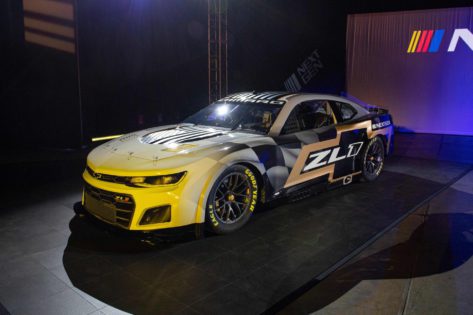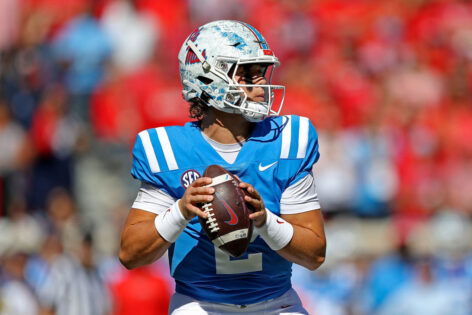Once a pure exhibition of horsepower and guts, the NASCAR All-Star Race has always been about breaking the mold. Born in 1985, it gave fans a no-points, no-holds-barred show. Here, winning and not surviving were the only things that mattered. Over the years, the race evolved from quick sprints to wild formats. It brought gimmicks like inversions, eliminations, and now, a new rule!
The 2025 edition at North Wilkesboro promised to be the boldest yet, with a ‘Promoter’s Caution’ ready to flip the script. Yes! NASCAR has introduced a caution that can be called at any time in the first 200 laps of the extended 250-lap event to bunch up the field. However, this was supposed to be a rule in addition to another big change, one that NASCAR teams supposedly opposed, and one veteran didn’t hold back when he called out the real reason why.
Jeff Gluck has had enough with the double standards
When NASCAR announced that the 2025 All-Star Race would give teams a rare open-playground to tinker with their cars, it was supposed to be a celebration of creativity. No strict templates. No micromanaged setups. Just real innovation, giving engineers and mechanics the chance to build speed like the good ol’ days. “Run What You Bring,” NASCAR said. But when push came to shove, many teams backed away. And veteran journalist Jeff Gluck didn’t hold back, calling them out.
In a now-viral rant, Gluck blasted on the Teardown podcast, “Man, teams, I think you are a bunch of a–holes. Honestly, you are a bunch of a–holes. Seriously. Stop crying about the freaking money. Will you listen to yourselves?” His anger wasn’t just about the decision itself but about the broader culture that’s seeped into the sport. NASCAR teams have long complained about the Next Gen car being a spec car that limits innovation. Yet, when NASCAR finally relaxed the leash, the very same teams balked. Why? Because it might cost them too much to innovate for a race that won’t do them any good in the Championship run.
Gluck mocked their double standard perfectly: “You complain about, ‘They won’t let us do anything with this car!’… and then they say, ‘OK, here’s a race, do whatever you want,’ … and you say, ‘No, that would cost money!’” The proposed open-sandbox format meant that teams could bring whatever they wanted to. As long as it passed NASCAR’s safety inspection. Think custom bodywork tweaks, experimental suspension setups, and wild aero packages! Slap in wild paint jobs too. A visual treat for the fans. In essence, it is everything unheard of since the Gen-6 era ended.
He’s not wrong. And an open rule book AllStar race would’ve been neat. (And Jeff dropped and F-bomb!!!)
— Chris Weaver (@chris8video) April 28, 2025
But, NASCAR teams feared the costs associated with pushing the limits for a non-points exhibition. In the modern era, where cost control is prioritized to keep smaller teams competitive, any deviation from the standard specification becomes a high-stakes financial risk. And since the All-Star purse wasn’t massively increased, sitting at just $1 million for the winning driver, most saw little incentive to spend big for bragging rights alone.
Gluck’s frustration hit a boiling point when he said, “You know how much money this is in this stupid sport? Why is everything about cost-cutting?” It’s a brutal but honest reflection of the amount of money NASCAR teams can make, even if they end up spending some additional money. Take Joe Gibbs Racing, for example. The team earned an estimated $116.09 million last year from just sponsorship revenue. Even the lowest on the list, Team Penske, earned about $20 million. So, the money is definitely there!
Ultimately, the fiery rant shines a light on a deeper truth. While NASCAR fans crave the old-school “win at all costs” spirit, today’s racing world is locked in a never-ending war between passion and profitability. And at least for 2025’s All-Star Race, it seems money won the first round.
All the new twists for the NASCAR All-Star Race
The 2025 NASCAR All-Star Race, scheduled for May 18th, isn’t just about what teams didn’t do with the open rulebook; it’s also about what NASCAR did change to shake up the show. Each tweak aims to boost drama, strategy, and fan engagement at North Wilkesboro. And each one brings its flavor to the classic exhibition.
For the first time since returning to North Wilkesboro, the NASCAR All-Star Race main event will run 250 laps, up from 200 in previous years. This longer distance adds a new layer of strategy, tire management, and endurance, with a scheduled competition break at or near Lap 100. The extension means more racing, more opportunities for comebacks, and more time for storylines to unfold.
Perhaps the most talked-about addition is the “promoter’s caution.” This allows NASCAR to throw a single, optional caution between Laps 101 and 220-unless a natural caution occurs after Lap 200. The idea is to bunch up the field and inject extra excitement if the race gets strung out. But it’s already sparked debate among drivers and fans about its potential to influence outcomes and create controversy. However, we all can agree that anything would be better than watching a driver lead 199 out of 200 laps from pole position like Joey Logano did in 2024, after NASCAR’s experiment with softer tires proved to be fruitless.
This year, the Pit Crew Challenge expands to include not just All-Star Race drivers but also those in the All-Star Open. Teams will run three laps, with a mandatory four-tire stop on the second lap. The combined times will set the starting lineup for both the Open and the Saturday heat races. This puts even more pressure on pit crews to perform flawlessly.
A brand-new wrinkle for 2025, the Manufacturer Showdown pits Chevrolet, Ford, and Toyota against each other in a mini-competition within the main event. Each manufacturer’s least-represented team is automatically included, and the rest are selected based on grid positions. The group with the lowest combined finishing positions wins, adding a layer of brand pride and strategy to the night.
With these changes, NASCAR is doubling down on the All-Star Race’s reputation for unpredictability and spectacle-even if the boldest innovation, the open rulebook, didn’t quite take off as planned. What do you think about the changes to the All-Star race? Let us know in the comments!
The post NASCAR Veteran Goes Nuclear Revealing the Greedy Reason Behind Rejected All-Star Blueprint appeared first on EssentiallySports.



